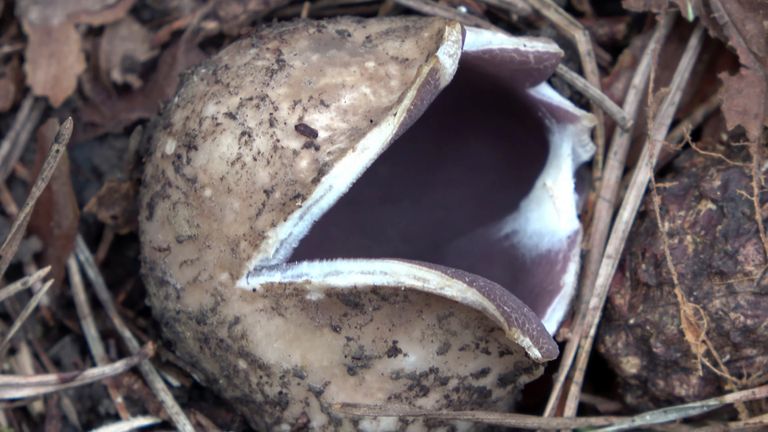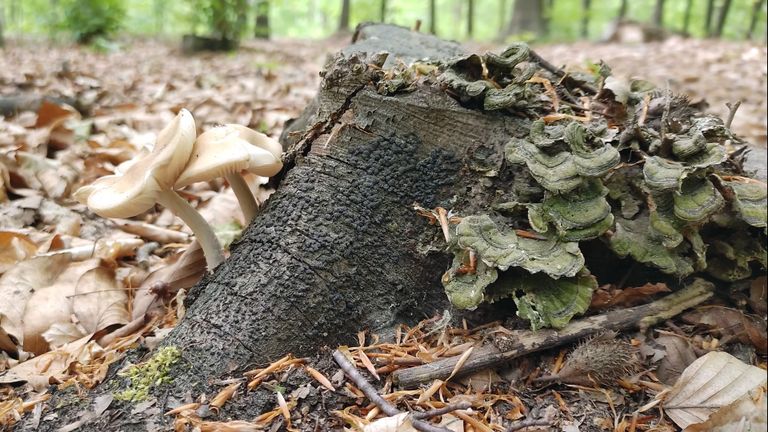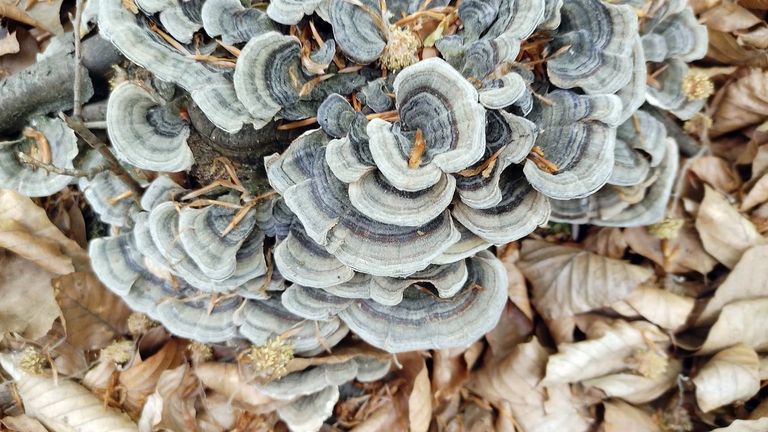
Another walk resulted in three species of mushrooms. One of them is highly poisonous, the other is edible, although it does not look like it, and the third is a species with medicinal properties.
The forest can feed us, heal us, or poison us.
Cazuelilla - Sarcosphaera coronaria beautiful but deadly poisonous


This unusual mushroom has two stages in its life. First, it is an underground fungus, most often taking a spherical form, and only later it rises to the surface, matures, and gradually breaks into triangular petals, thus giving the spores a chance to extend the species.


It can reach up to 20 cm in diameter. Initially, the interior of the mushroom is whitish, with time it is purple and smooth. The outer shell is mostly gray-white. The flesh is white and brittle. The mushroom in its raw state is highly, even deadly, poisonous.



It is a rare species, it can be found in forests mixed with a calcareous substrate, for this the region of the Kraków-Częstochowa Jurassic is an ideal environment for it. The first fruiting bodies appear already in early spring, and in June you can find quite a lot of this species.

Rooting Shank looks like a toadstool but is edible.


Of course, I do not encourage people with no experience to collect this species of mushrooms, similar to poisonous toadstools. The rule is simple, if you have any doubts, leave it in the forest.


The cap of this mushroom can reach a diameter of 12 cm. It is gray-yellow, light brown in color. The surface of the hat is smooth, sometimes radially wrinkled. It becomes sticky and rough when wet.

The young fruiting body has a bell-shaped, conical shape with a small hump. The gills are white in color, rare. The leg is cylindrical, slender, don20 cm high, hollow in the center. The flesh is white, odorless and mildly flavored.

The fungus appears already in June, and its favorite place is rotting trunks, old wood buried in moist soil, mainly in deciduous and beech forests.

Turkey tail, a forest remedy for Lyme disease, herpes and more
This species of mushroom in Europe is not classified as an edible species, but in some countries, such as Mexico and the Far East, it is eaten.

The fungus is an arboreal species that grows laterally to the substrate. The fruiting bodies are clustered into groups, strung together to form rosette-shaped, fan-shaped clusters with a diameter of up to 120 mm. The surface of the mushroom is slightly hairy, multicolored, reddish, bluish, yellowish, steel black and concentrically zoned. The brim of the hat is sharp and wavy.

The flesh is white in color and thin. It has no perceptible taste or smell. The fungus can be found practically on all continents. It does not disdain any place, it grows in forests of all types in parks, gardens and orchards. But its secret is health properties. Crimsonoma increases the number of white blood cells (leukocytes), thereby increasing resistance to pathogens and toxins. It supports the functioning of the small intestine, which is of no small importance in the fight against Lyme disease, it stimulates the immune system. It is used to treat herpes virus, hepatitis, lung diseases and mycosis. In Japan, it has been considered a full-fledged drug for the treatment of breast, esophagus, stomach and colon cancer for over 30 years.
And a few other species found in the June forest
I jeszcze kilka innych gatunków spotkanych w czerwcowym już lesie


Enjoy 😉

Does they have a good taste of food or not?